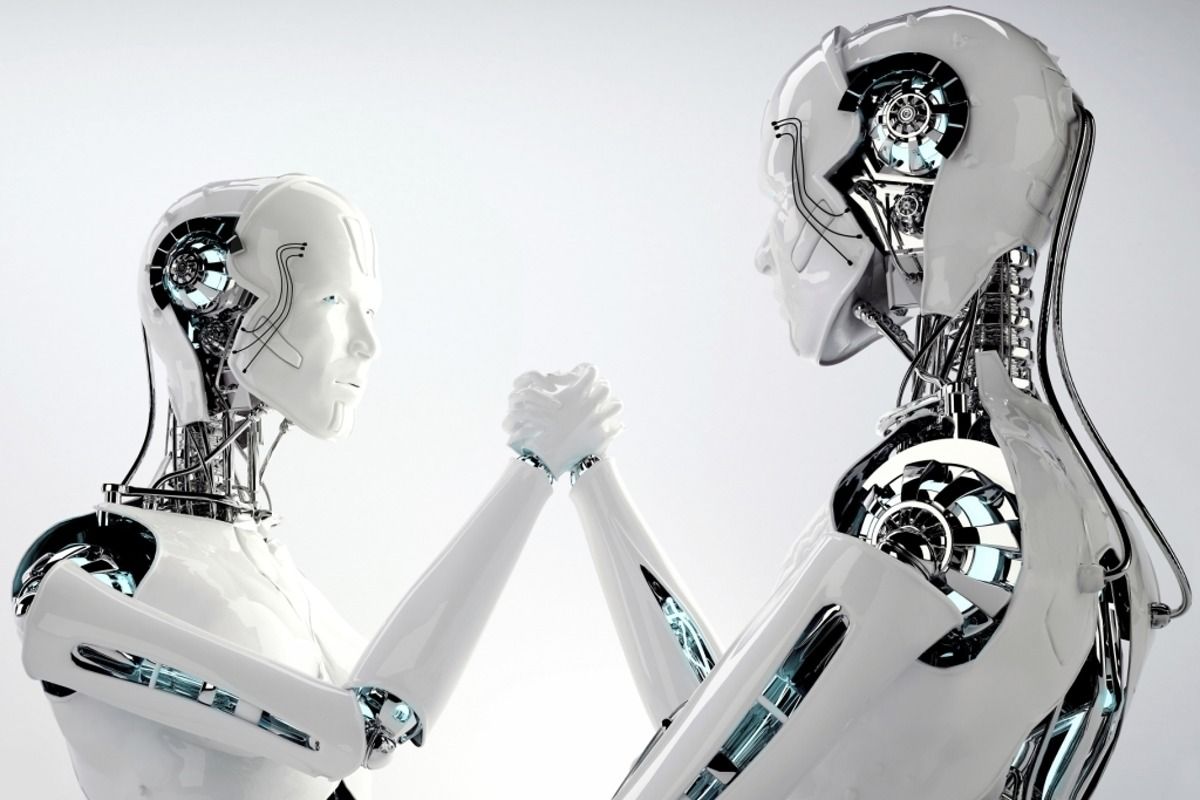Page 10768
Nov 1, 2016
Google’s A.I. Learns How to Encrypt Itself
Posted by Elmar Arunov in categories: education, encryption, robotics/AI
First impressions count, but they’re notoriously subjective. Now computers have learned to make snap judgments just like humans do.
Nov 1, 2016
What the Transhumanist candidate learned from the election
Posted by Zoltan Istvan in categories: policy, transhumanism
My new interview on Engadget, which goes over a lot of transhumanist and political policy terrain:
Zoltan Istvan wants to create a movement, not a moment.
Nov 1, 2016
Fixtureless smart panels illuminate with Lego-like construction
Posted by Shane Hinshaw in category: internet
When it comes to the placement of interior lighting, much of the thought involved tends to relate to reaching nearby outlets. But the latest lights Toronto-based Nanoleaf may end up providing creative individuals one extra element to puzzle over. The Nanoleaf Aurora Smarter Kit is designed to be a modular lighting solution, featuring WiFi-controlled, color-adjustable, triangular panels that snap together like Lego.
Food is one of life’s absolute necessities and one that people take great pleasure from, so it’s no surprise that the future of food is one of those topics that always draws significant interest. So what will we be tucking into in the year 2036? A plate of bugs with a side order of seaweed? A glass of milky liquid? Cajun Swedish fusion cuisine? Or will it be a world of shortages where we munch on government issue Soylent Green and try not to think about where it came from? Take your places at table and join us as we take a look at what mealtimes in the future might look like.
Nov 1, 2016
How nanobionic spinach plants can detect explosives
Posted by Shane Hinshaw in categories: cyborgs, nanotechnology, transhumanism

The strength of spinach isn’t only in its nutrients, but also in its ability to be hacked to function as a sensor, according to researchers at the Massachusetts Institute of Technology. An MIT team used wonder-material carbon nanotubes to give the greens the ability to detect explosives and wirelessly transmit information to a mobile device.
MIT engineers applied a solution of nanoparticles to the underside of the leaves, allowing them to be taken up into the mesophyll layer where photosynthesis takes place. The embedded nanotubes then acted as sensors able to detect nitroaromatic compounds – which are often used in explosives like land mines – in the groundwater taken up by the plants’ roots.
Continue reading “How nanobionic spinach plants can detect explosives” »
Nov 1, 2016
Scientists have built a Nightmare Machine to generate the scariest images ever
Posted by Shane Hinshaw in categories: Elon Musk, information science, robotics/AI
We’re supposed to be building robots and AI for the good of humankind, but scientists at MIT have pretty much been doing the opposite — they’ve built a new kind of AI with the sole purpose of generating the most frightening images ever.
Just in time for Halloween, the aptly named Nightmare Machine uses an algorithm that ‘learns’ what humans find scary, sinister, or just downright unnerving, and generates images based on what it thinks will freak us out the most.
“There have been a rising number of intellectuals, including Elon Musk and Stephen Hawking, raising alarms about the potential threat of superintelligent AI on humanity,” one of the team, Pinar Yanardag Delul, told Digital Trends.
Continue reading “Scientists have built a Nightmare Machine to generate the scariest images ever” »
Nov 1, 2016
Over The Last 2,000 Years, Humans Have Evolved In Some Surprising Ways
Posted by Shane Hinshaw in category: genetics
Genetic traits ranging from height to lactose tolerance and menopause onset have changed in the blink of an evolutionary eye.
Nov 1, 2016
On the Topic of Senescent Cells: Should We All be Trying to Take Navitoclax?
Posted by Steve Hill in categories: biotech/medical, health, life extension
Science is making progress on the treatment of aging and age-releated diseases but should you rush out and start your own testing or not? This article weighs up some of the pros and cons.
Senescent cells accumulate with age, and secrete an unfortunate combination of signals that harms organs and tissues in numerous ways, such as via the production of increased chronic inflammation. This is one of the root causes of aging and age-related disease. Safe and effective clearance of senescent cells has been on the SENS rejuvenation biotechnology agenda for fifteen years, but only recently has progress in scientific funding and demonstrations of improved health and life spans in mice snowballed to the point at which startup companies could make a real go of it. Things are moving fairly rapidly in this field now. With the recent $116 million venture investment in UNITY Biotechnology’s work on senescent cell clearance, and other companies angling for their own launch, it is fair to say that this line of research and development is underway for real. Clinical trials of senescent cell clearance will be underway soon, funded by UNITY Biotechnology, and using drug candidates such as navitoclax developed in the cancer research community, noted for their ability to induce apoptosis, a form of programmed cell death. Senescent cells are primed for apoptosis, and it takes little to tip them over the edge in comparison to a normal somatic cell, which means that there may well be quite a large stable of existing drugs that will have some useful effect.
The question here is one that is only now starting to be useful to ask: should we all be running out today to obtain and take a drug (such as navitoclax) or drug combination (such as dasatinib and quercetin) that were shown to clear some fraction of senescent cells in rodents? Certainly there have been no shortage of people chasing after whatever the current hype of the day was in past years; I’m sure you all recall resveratrol and other alleged calorie restriction mimetics or telomere length enhancers. All a waste of time and effort. The difference between the science behind those and the science between senescent cell clearance is considerable, however. The items of the past have all been associated with altering metabolism so as to modestly slow aging, at best, and we have the very good examples of calorie restriction and exercise to show us the immediate bounds of the plausible on that front in our species.
Continue reading “On the Topic of Senescent Cells: Should We All be Trying to Take Navitoclax?” »

















